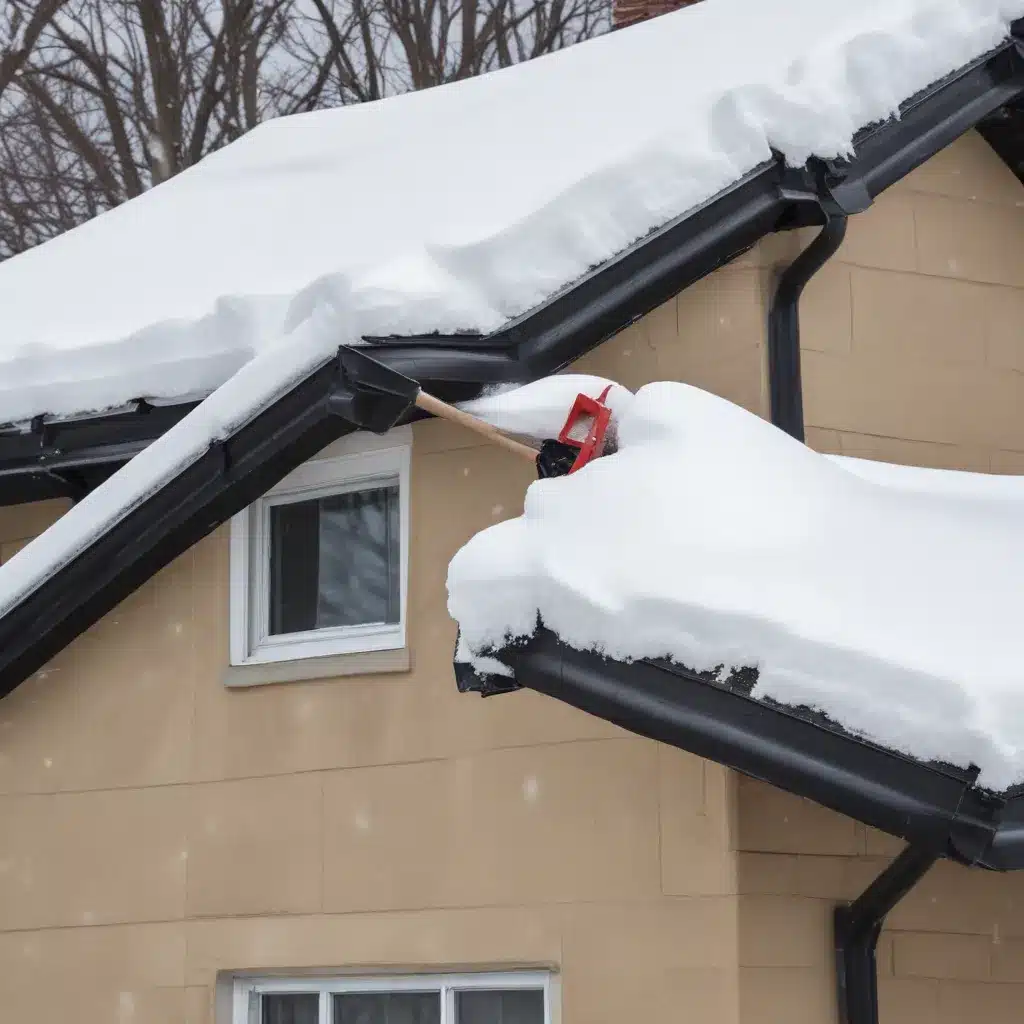
Navigating the Challenges of Winter Roof Maintenance
As the winter season transforms the landscape into a picturesque wonderland, homeowners and property managers face a silent threat: the increasing load of snow on their roofs. Excessive snow accumulation can pose a significant risk to the structural integrity of your property, potentially leading to costly and hazardous scenarios. As a seasoned roofing professional, I’m here to provide you with practical tips and in-depth insights to ensure your roof remains safe and secure throughout the winter months.
Understanding the Risks of Snow Load
The weight of heavy snow can be a hidden danger, putting tremendous strain on your roof’s structure. As the snow piles up, the increasing load can lead to sagging, cracks, and even the catastrophic collapse of your roof. Recognizing the warning signs early is crucial to mitigating the risk.
Look for the following indicators of an overburdened roof:
- Sagging Areas: If you notice any areas of your roof starting to sag or dip, it could be a sign that the snow load is becoming too much for the structure to handle.
- Strange Sounds: Unusual creaking, groaning, or popping noises coming from your roof may indicate that the structure is under stress.
- Visible Cracks: Inspect your home’s interior walls and ceilings for any cracks or deformations, as these can be a sign of structural issues caused by the snow load.
Don’t dismiss even minor changes or unusual observations – they could be the early warning signs you need to take action and protect your property.
Prioritizing Safety During Snow Removal
Safely removing snow from your roof is a crucial step in mitigating the risks of snow load. However, this task comes with its own set of hazards that must be addressed. As a roofing professional, I cannot stress enough the importance of prioritizing your personal safety during this process.
Proper Tethering and Harnesses
When working on a slippery, snow-covered roof, it’s essential to have a secure method of tethering yourself to the structure. Consider running a sturdy rope or cable parallel to the roof’s edge, using carabiners or other secure attachments to create a safety line. This Reddit thread provides valuable insights into effective tethering techniques.
Additionally, investing in a high-quality safety harness can offer an added layer of protection, preventing accidental falls or slips. Ensure that the harness is properly fitted and secured to the safety line or anchor points on your roof.
Proper Equipment and Techniques
Equip yourself with the right tools for the job, such as a sturdy snow shovel, a snow rake for reaching higher areas, and non-slip footwear designed for roof work. Avoid using tools that could potentially damage your roof, as this can create further problems down the line.
When removing snow, use proper techniques to distribute the load evenly and avoid creating dangerous piles or overloading specific areas. Gradually remove snow in layers, rather than attempting to clear the entire roof at once.
Professional Assistance
If you’re not comfortable with the risk or the physical demands of snow removal, consider hiring a professional roofing contractor. Rainguard Roofing emphasizes the importance of professional snow removal services, highlighting the benefits of safety, efficiency, and peace of mind.
Experienced roofers have the necessary training, equipment, and expertise to tackle the task safely and effectively, ensuring your property remains protected throughout the winter season.
Proactive Measures for Snow Load Mitigation
While removing snow is a crucial step, there are also proactive measures you can take to mitigate the impact of snow load on your roof. These preventative strategies can help you stay ahead of the challenge and safeguard your property.
Reinforcing Weak Spots
Identify any areas of your roof that may be more vulnerable to snow load, such as low-pitched sections or locations with structural flaws. Consider reinforcing these areas by adding additional support beams, bracing, or even considering a roof replacement with a more snow-resistant design.
Taylored Restoration’s blog provides comprehensive guidance on recognizing warning signs and taking proactive measures to protect your roof from collapse.
Optimizing Roof Design
When planning a roof replacement or new construction, pay close attention to the pitch and materials used. Steeper-pitched roofs can help shed snow more effectively, while certain roofing materials, such as metal or slate, are inherently more resistant to snow load.
Additionally, consider installing roof ventilation systems or heated cables to prevent ice dams from forming, which can add to the overall snow load.
Developing an Emergency Response Plan
Despite your best efforts, there may be situations where the snow load becomes too much for your roof to handle. Having an emergency response plan in place can help you and your family stay safe in the event of a potential roof collapse.
Penn National Insurance’s home safety guide emphasizes the importance of being prepared, including knowing when to evacuate and how to contact professional assistance.
Embracing Winter with Confidence
As a seasoned roofing professional, I understand the challenges that come with maintaining your property during the winter months. However, by prioritizing safety, taking proactive measures, and leveraging professional expertise, you can navigate the snow load obstacles with confidence.
Remember, the beauty of winter shouldn’t come at the expense of your home’s integrity. Stay vigilant, act decisively, and don’t hesitate to seek the guidance of roofing experts like the team at Roofers in Northampton. Together, we can ensure your roof stands tall against the weight of winter, safeguarding your property and providing you with the peace of mind you deserve.

